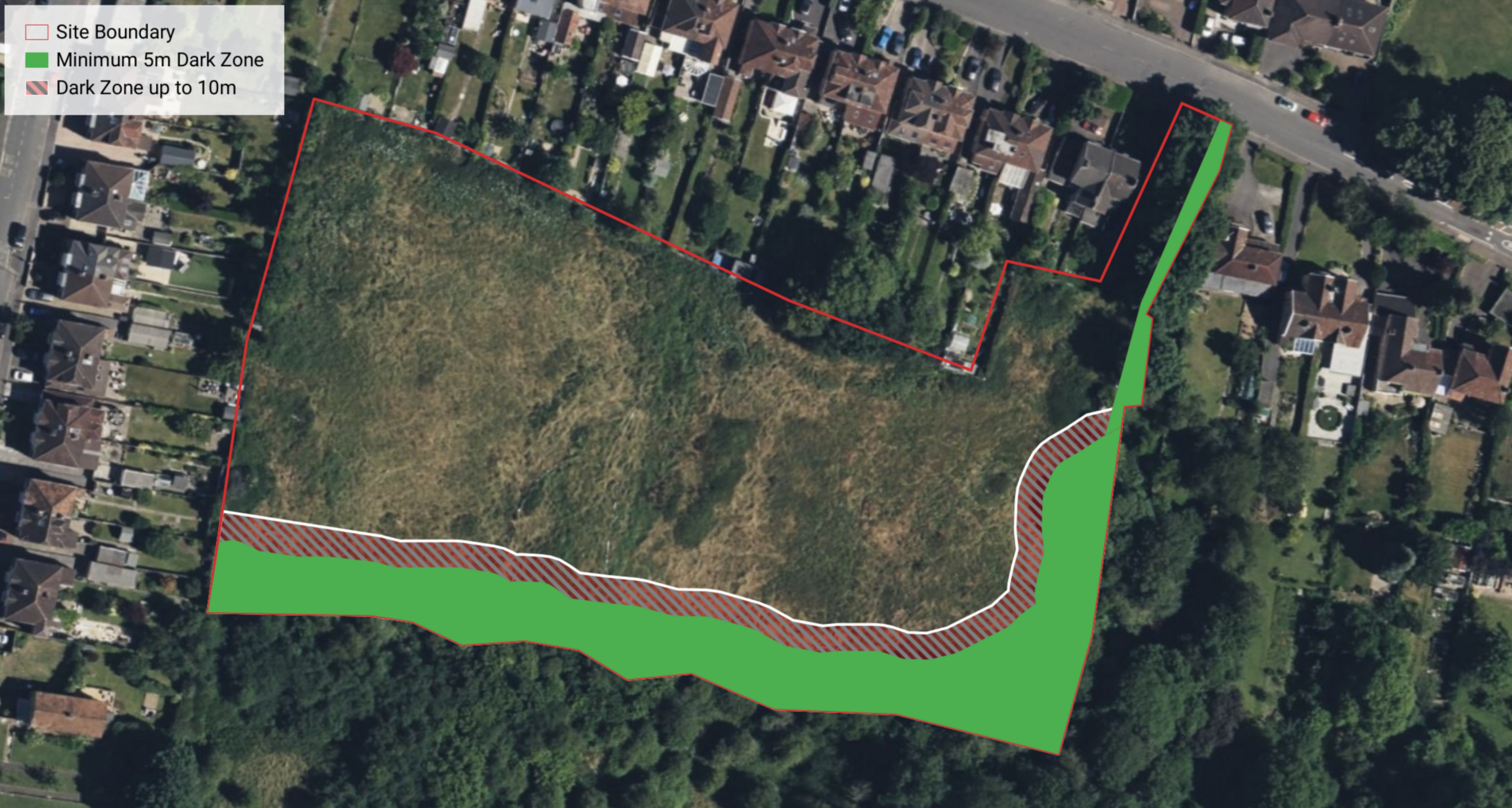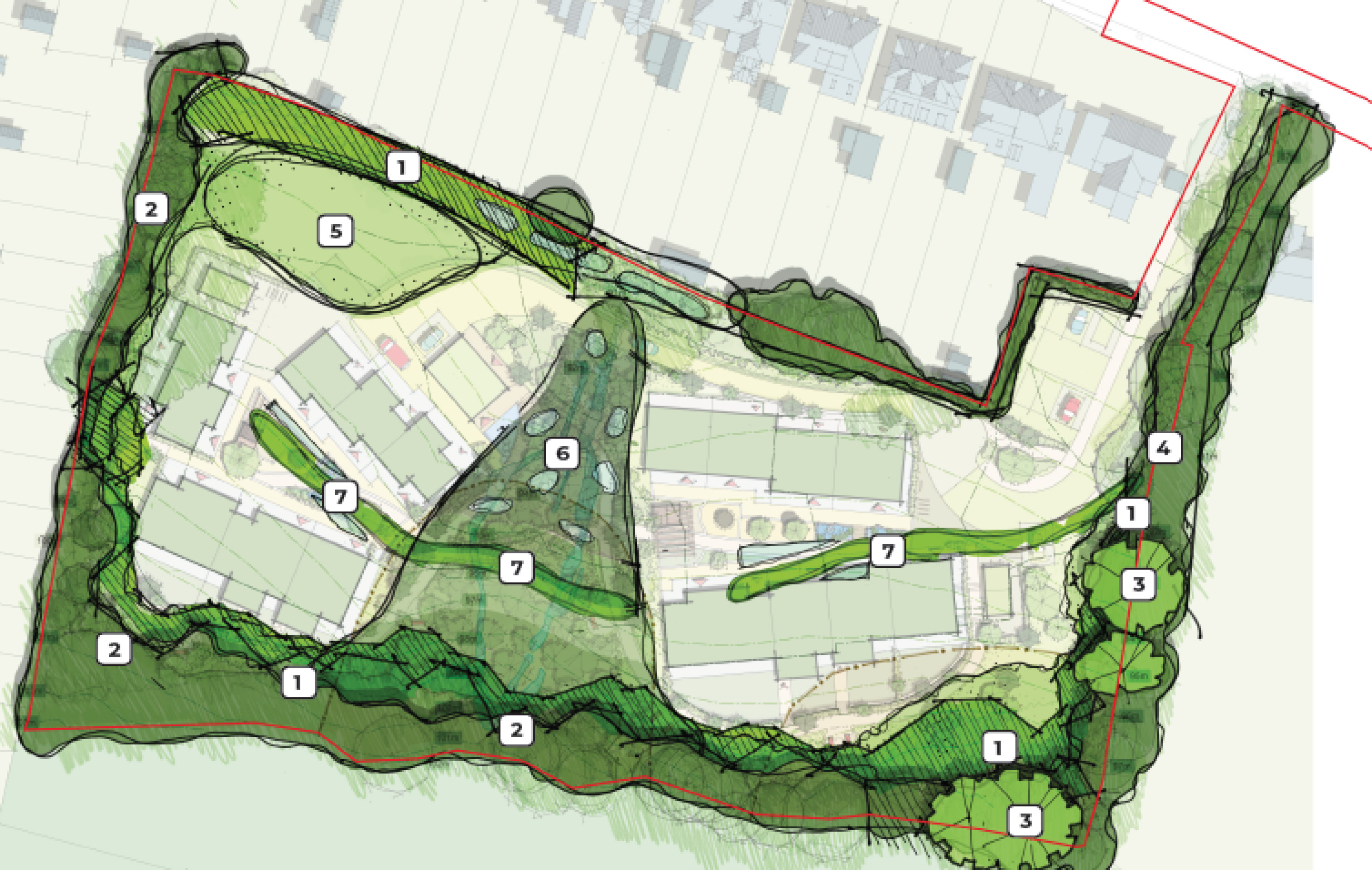Existing Site Ecology
The potential for the site to support legally protected and notable species has been assessed using desk-based information combined with a range of field surveys over the last year. Species considered have comprised amphibians, badgers, bats, breeding birds, dormice, hedgehogs, reptiles and invertebrates. Botanical surveys have been undertaken, with vegetation types, species and habitats identified.
The ecological appraisal has identified a number of avoidance, mitigation and compensation measures to be incorporated into the scheme design:
- To protect bats – the access track will not be lit by any new artificial lighting and it will rely on existing lighting from Englishcombe Lane. Dark corridors will be maintained around the edges of the site. A Lighting Strategy for the site will ensure that dark corridors will not be raised above existing light level. The development will also provide a range of built-in bat roosting features.
- To protect slow-worms – retained habitats will be managed to support a healthy population of slow-worms. Features such as log piles will ensure there are safe areas for slow-worms to shelter and hibernate on site.
- To protect invertebrates – watercourses will be retained within the site, and the retained areas of grassland managed to promote the continued occupation of the site by invertebrates.
- To protect badgers – retained habitats will be created and managed to provide good foraging habitat for badgers including promoting good abundance of earthworms in grassland and planting fruit trees.
- To protect habitats – re-establishing areas of calcareous grassland within the site.
Biodiversity Net Gain
Biodiversity Net Gain (BNG) ensures that habitats for wildlife are left in a measurably better state than they were before development takes place. Biodiversity is measured in standardised ‘biodiversity units’, which can depend on things like the size, quality and type of habitat. Biodiversity units can be lost through development, or generated through proposals to create and enhance habitats. Site developers must deliver a BNG of 10%, which can include both on- and off-site opportunities.
It is challenging to provide 10% BNG within the Englishcombe Lane site. Opportunities identified to deliver BNG include the potential to create and restore areas of species-rich grassland and improve species-poor hedgerows and bat corridors. It is anticipated that a roughly neutral position will be achieved on-site, with the remainder of the BNG requirement delivered across one or more Council-owned sites.
Opportunities within the site are shown on the numbered plan and include:
- Proposed buffer / screen structural planting along the northern and southern boundaries of the site.
- The existing boundaries and woodland edge to the south and west of the site is retained and enhanced, for example through selective planting of native trees, shrubs and understorey planting.
- Veteran trees are protected during the construction phase and their ongoing management is promoted.
- Hedgerows and planting along the eastern boundary of the site are improved for enhanced biodiversity and the bat commute lines are strengthened.
- Existing grassland is retained / enhanced and managed for improved biodiversity.
- ‘Wet woodland’ planting is included in the area between the two clusters of dwellings, including native understorey planting. The central area also includes ‘scrapes and swales’ (these are shallow areas of water / puddles within indentations and areas of marshy habitat).
- Planting through the ‘central band’ of the site includes sections of hedgerow, courtyard gardens and trees in planters where they are closer to buildings.


